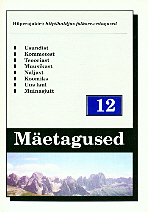Inimene eesti võrdlustes
Man: Comparisons in the Estonian Language
Author(s): Katre ÕimSubject(s): Customs / Folklore
Published by: Eesti Kirjandusmuuseum
Summary/Abstract: In the Estonian comparison typology more than 40% of types concern the comparison of something or somebody with a living creature, of which the mere 30% concerns comparisons with a man(possessing the semantic qualities of being alive and human). In archive records on proverbial expressions, some types of comparisons with human beings make up nearly 8%, of which only 2.5% are known to form comparisons between two individuals. Comparisons with a human being as such are very rare in the Estonian language. In this case the comparison makes no indication to the actions/qualities, the origin, etc. of the person, but marks it with a proper noun: the person is famous only within a certain area, outside of which s/he is not known, and that limits the use of expression considerably. More often, the comparisons refer to a selection of the person's actions or qualities and focus on that: this method allows to express the idea through a reference as accurately as possible. The reference is inspired mostly by the origin of people. And as one might expect, the peoples who live among the Estonians or are their neighbours, such as the Romany, Jews or Russians, are most frequently mentioned. In case of human referents in the expressions under discussion, an effective method of word composition is the application of suffix -ja [the English counterpart being -er]. The outcome is often an agent noun for single usage, which for some reason has rooted in the language but is not used outside phraseological expressions, such as justkui roomasikutaja [like someone who pulls hame straps]. To conclude we might say that the comparison with human beings is not very common in the Estonian comparison typology.
Journal: Mäetagused. Hüperajakiri
- Issue Year: 1999
- Issue No: 12
- Page Range: 87-95
- Page Count: 9
- Language: Estonian

